Top 12 Museums in Tanzania: Where History Meets Inspiration
Tanzania is not just praised because of its magnificent nature and wildlife but because of its rich cultural heritage and history, which one can experience in a number of museums around the country. These museums range in content and topics that include archaeology treasures, traditional artifacts of the past to modern day displays of the different ethnic groups that make up this nation.
Dar es Salaam, Stone Town of Zanzibar and the heart of mainland have much to offer of busy streets and interesting places of their own, but in their museums, each can take the visitor through a story that needs to be heard and enjoyed. This guide will walk you through the 12 best museums in Tanzania, why they are special, what you must know in advance and where to go to make the most out of your visit.
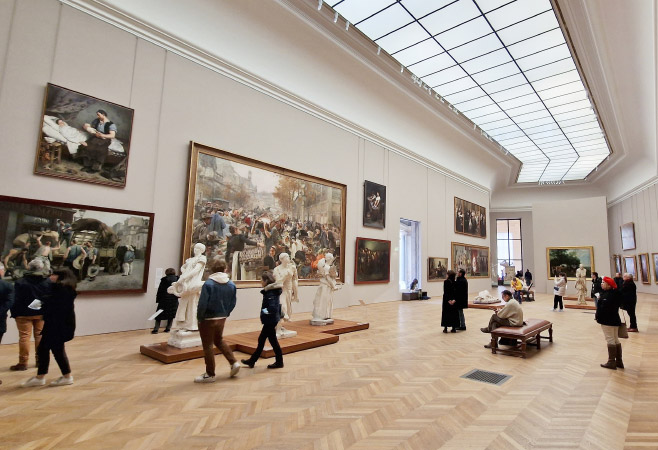
Tanzania is a popular destination for history buffs and those interested in learning more about Tanzanian culture
- List of Top 12 museums to visit in Tanzania for a Unique Travel Experience
- National Museum and House of Culture
- Village Museum, Dar es Salaam
- Arusha Declaration Museum
- Olduvai Gorge Museum, Ngorongoro Conservation Area
- Princess Salme Museum
- Freddie Mercury Museum
- National Natural History Museum, Arusha
- Peace Memorial Museum
- Bujora Cultural Centre and Sukuma Museum
- Iringa Boma Regional Museum and Cultural Center
- URITHI Tanga Museum
- Chagga Museum
- Things to Know Before Visiting Museums in Tanzania
- Conclusion
List of Top 12 museums to visit in Tanzania for a Unique Travel Experience
Tanzania holds its rich history and has several museums to keep the display of the ancient cultures, colonial history, and the way the country struggled to gain independence with pride. These centers have been united to tell the history of a rich heritage in Tanzania. Below are 12 of the most beautiful museums in Tanzania to experience its history and heritage.
National Museum and House of Culture
The House of Culture and National Museum in Dar es Salaam is one of the top museums in Tanzania, presenting an intriguing excursion in Tanzanian history, art and heritage. The museum, founded in 1934 and officially opened to the public in 1940 is rich in an archaeological record of findings, fossils found in Olduvai Gorge that represent the evolution of humankind and ethnographic representations of Tanzanian cultures.
Tourists are able to see displays regarding traditional crafts, music and clothing. There are also exhibits focused on the colonial history and independence movement of the country. It is also home to art projects, exhibitions, workshops and other cultural activities, as well as being located in the House of Culture. Conveniently located in the heart of Dar es Salaam, it provides a well-curated journey through the country’s past and cultural identity, offering valuable context for understanding Tanzania’s development and diversity.
Address : 5 Shaaban Robert St, Dar es Salaam, Tanzania
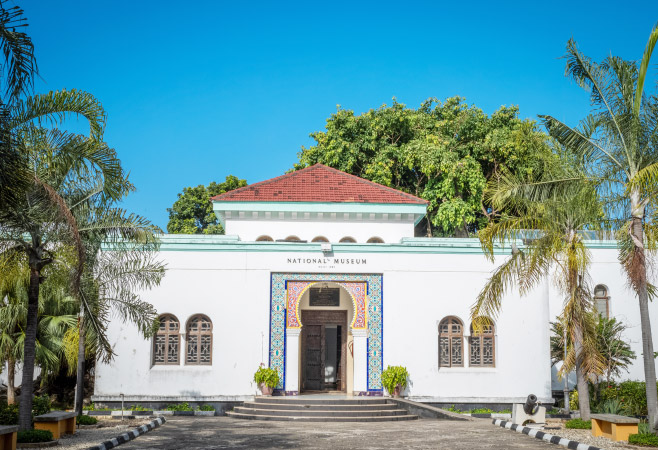
The National Museum and House of Culture is one of the oldest and most prominent museums in Tanzania, known for its rich collection and central role in preserving the nation’s heritage.
Village Museum, Dar es Salaam
The Village Museum in Dar es Salaam is a representation of cultures preserved in real life as it shows the cultures rooted in the countryside of Tanzania. Being only a several kilometers away from the city center, t offers visitors authentic reconstructions of about 30 traditional houses representing Tanzania’s diverse ethnic groups, whose buildings are made of original materials and procedures. Tourists have the opportunity to enter such houses to observe the life and activities of communities nationwide.
Daily traditional dances are also presented in the museum, which provides an enlightening experience on the musical and oral storytelling traditions of Tanzania. Interpretative panels tell you what each building meant in terms of culture and cultural life, such as the coastal Swahili homes, and Maasai round huts. The Village Museum can be an interactive experience because of its open-air environment, and a visit to the museum is a prerequisite to an interactive tour whose experience is not limited to static displays and exhibits, because a museum tour in Tanzania especially in the village museum involves exploring the diverse cultural experiences.
Address : 66FW+WG8, Dar es Salaam, Tanzania
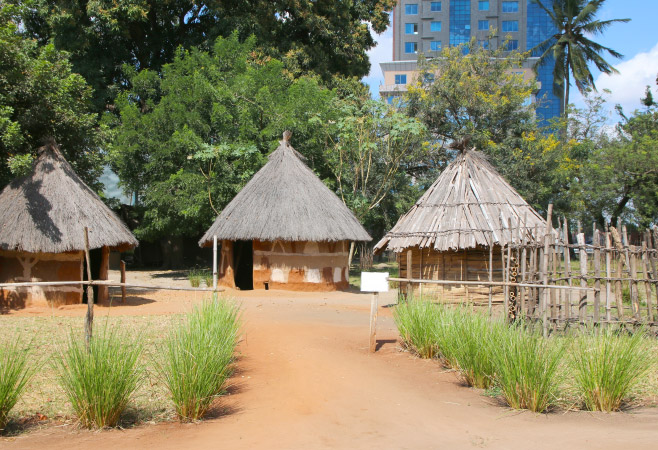
Experience the beautiful Village Museum, which exhibits Tanzania's vibrant cultural traditions through authentically constructed dwellings.
Arusha Declaration Museum
The Arusha Declaration Museum, located in the city center, commemorates the historic 1967 Arusha Declaration by President Julius Nyerere, which shaped Tanzania’s path toward socialism and self-reliance.The museum is a tribute to the revolutionary piece of policy 1967 Arusha Declaration which was passed by the first president of Tanzania, Julius Nyerere. The statement espoused self-reliance and socialism, which had highly influenced the post-independence course of the country.
Visitors can find inside a fascinating display of artifacts, documents and photographs that tell the story of the struggle of Tanzania to independence and the coming into effect of the declaration. The exhibits are an exploration of who Julius Nyerere was and what his legacy entails with special mention of the social and economic changes that characterized his rule. Although it is not the largest museum in the city, its deep meaning and importance are the reasons why it can be considered one of the best museums in Arusha to be attended by a person who wants to learn more about the political and national identity of Tanzania. The museum provides an informative and impacting view on the fascinating way of the development of the country.
Address : JMJQ+C5V Arusha Declaration Museum, Arusha, Tanzania
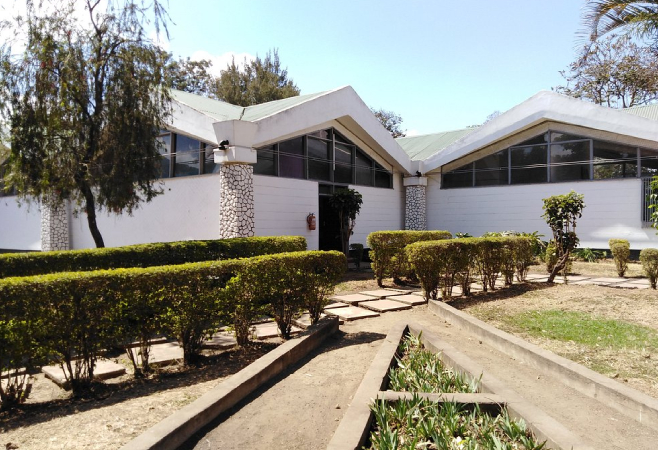
The museum features exhibits that highlight the political history of Tanzania and the impact of the declaration on the nation's socio-economic landscape
Olduvai Gorge Museum, Ngorongoro Conservation Area
The Olduvai Gorge Museum is located in one of the major archaeological sites in the world located in Ngorongoro Conservation Area. Known as the Cradle of Mankind, Olduvai Gorge is also a place where paleoanthropologists Mary and Louis Leakey made groundbreaking discoveries some of the most noteworthy finds in the history of human evolution.
Visiting this museum offers a very exciting exploration of millions of years of human history. Viewers are presented with casts of the fossils of hominids such as the Homo habilis and Paranthropus boisei and stone tools over two million years old. There is even a spectacular view of the gorge itself, facing inside and why not, since visitors are thus able to imagine the layers of history that have been excavated. This is the reason why it has become one of the best museums found in Tanzania and its relevance in education and direct connection with human origins makes it offer a unique and memorable experience to any one who loves archaeology and human evolution.
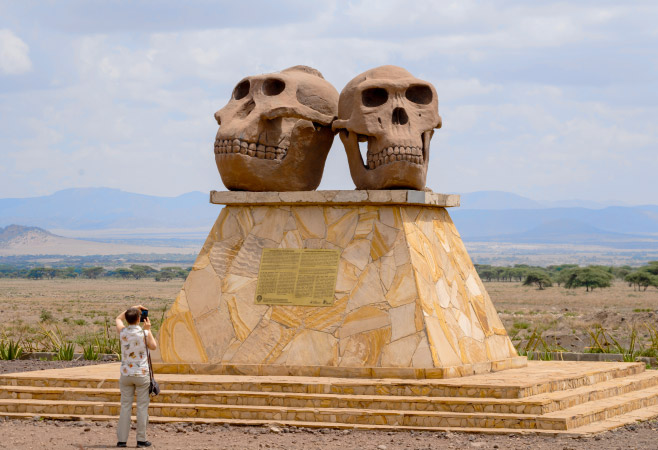
The Olduvai Gorge Museum is an onsite museum built next to the most famous archaeological site in East Africa
Princess Salme Museum
Princess Salme Museum situated in the Stone Town is probably the most interesting cultural attraction to the best museums in Zanzibar. The museum is devoted to the life and legacy of Princess Sayyida Salme, a 1800s Zanzibari royal who broke tradition by running off with a visiting German merchant and we bring you a personal and historical insight into the past of Zanzibar. Located in an old building, it features letters, photographs, and personal things that give an insight into the story of how the princess had to go through a prominent Omani-Zanzibari throne to lead her life in Europe.
The visitors can learn about the royal history of Zanzibar, cultural standards of the era as well as the position the island had in the global trade and politics through the exhibits offered. The museum takes the form of a time capsule with a romantic and historical touch because it has an intimate setting, and the artifacts are well preserved. The Princess Salme Museum is a tourist attraction to the people concerned with heritage and personal life stories that influenced the identity of Zanzibar.
Address : 236 Hurumzi ZANZIBAR TZ, 0000, Tanzania
Freddie Mercury Museum
Visitors interested in music and fans of the iconic Queen frontman Freddie mercury cannot miss visiting the Freddie Mercury Museum in Stone Town, Zanzibar. The building in which soprano singer Freddie Mercury (the real name of whom, Farrokh Bulsara), spent part of his childhood, deserves to be at the center of attention as it is located in the very building where. The museum is a chance to get acquainted with the early life of the worldwide known musician before his fame. It will include rare photography, personal memories and interactive exhibitions, which will be a chronicle of his pathway to the world stage, beginning at Zanzibar. Another point reflected by the museum is
The cultural background of Freddie and what influenced his unique way to create and style. In addition to taking an exhibit, the place is also enjoyable, such that the historic beauty of Stone Town becomes the befitting background. Like a fanatical admirer of the Queen musician or even a mere fan interested in one of music's biggest names, the Freddie Mercury Museum will provide you with a moving and inspiring account of an eventful life.
Address : 57 Kenyatta Rd, Zanzibar, Tanzania
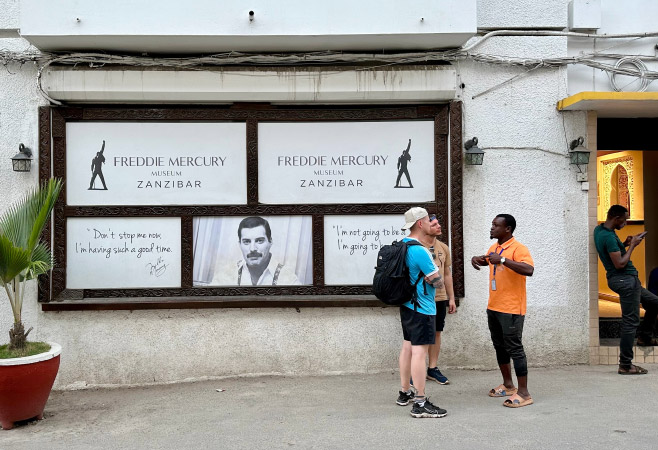
The Freddie Mercury Museum is the first museum dedicated to the world legend Freddie Mercury and is located in Shangani, Stone Town
National Natural History Museum, Arusha
The National Natural History Museum in Arusha is a remarkable site on any list of Tanzanian museums, particularly when one loves the natural history and prehistoric work of the prehistory of a country. The museum provides an interesting combination of history, paleontology and anthropology all under one roof, a former German colonial fort. It has exposed one of its key features known as the detailed exhibit on the discoveries at Olduvai Gorge that includes fossils and tools with which beginnings of humankind can be traced. Other exhibits visitors can visit include those by Tanzania wildlife with mounted specimens and information plaques on how Tanzania national parks are.
The museum explores the colonial history of the area and presents objects that present the cultural heritage of native people. Being in the heart of Arusha, it is convenient to make a visit to the place on your way to a safari destination such as Serengeti or Ngorongoro Crater. The National Natural History Museum has the rich exhibits carefully organized and educative that make it a fulfilling visit to both history lovers and inquirers.
Address : JMJW+5CW, Arusha, Tanzania
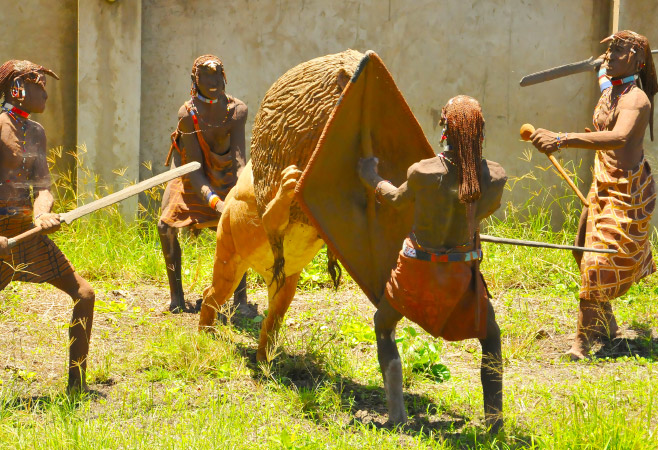
National Natural History Museum is the wing dedicated to human evolution, since much of what we know about the topic came from fossils unearthed in Tanzania
Peace Memorial Museum
Peace Memorial Museum (Beit el Amani) is one of the most popular museums on the islands which gives a fascinating tour through the history of the islands and Zanzibar traditional cultures. Located in Stone Town, this striking white-domed building was designed by British architect J. H. Sinclair in 1925 and originally served as a World War I memorial.
It is now home to collections that document the history of Zanzibar, beginning with the Omani sultanate and the spice trade and continuing through to the fight to gain independence. Tourists are allowed to visit the exhibits containing traditional garments, old photographs, maritime artifacts, and other objects connected to the rich history of Islamic traditions of the region. The museum also gives details about Zanzibar and its position in the trade networks of the Indian ocean. The Peace Memorial Museum is considered to be a beautiful place on the list of travellers who are willing to comprehend the complicated history that brought up this archipelago of islands.
Address: R5JR+QGR, Benjamin Mkapa Rd, Zanzibar, Tanzania
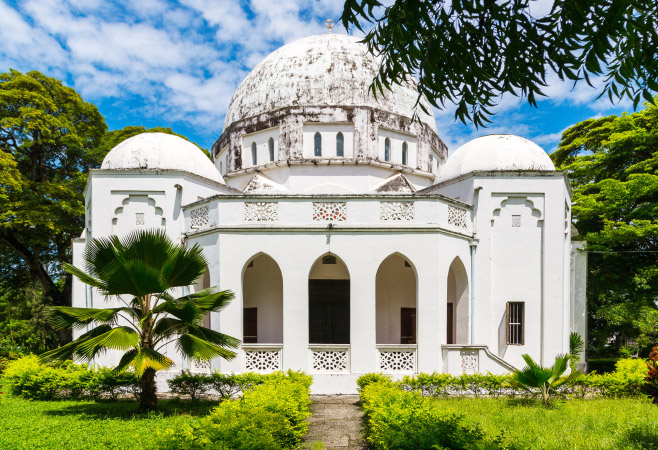
The Peace Memorial Museum in Zanzibar is a historical museum that stores a lot of documents and artefacts about the history of Zanzibar .
Bujora Cultural Centre and Sukuma Museum
The Sukuma Museum at Bujora near Mwanza highlights the traditions of the Sukuma people, Tanzania’s largest ethnic group. Founded in the 1960s by missionary Father David Clement, the museum preserves Sukuma history, music, dance, and artifacts. They will be allowed to visit the traditional thatch houses, ceremonial drums, spears and costume wear in the dances and rituals.
There is also cultural dance which is so vibrant and an interactive experience such as the snake dance offered by the centre. Along with the exhibits, Bujora Cultural Centre is also a place of cultural education and preservation as it acts as a community center. With its beautiful landscapes, it is a perfect destination to visit by any traveler who is in love with anthropology, with his or her heritage and with traditions that live on. A must-visit, as well, to all the people who would like to know the richness and variety of Tanzanian cultural diversity.
Address : F25Q+3X6, Lumve - Bujora, Kisessa, Tanzania
Iringa Boma Regional Museum and Cultural Center
The Iringa Boma Regional Museum and Cultural Center, has been built in a beautiful historical building, which is the former German military hospital built in 1914. This architectural masterpiece is a perfect blend of African and Swahili architecture with addition of European features, which offers the viewer an extraordinary visual phenomenon and a narrative in itself. Through its well thought-out exhibits, visitors of the museum get to explore the rich culture in the region of Iringa.
There are also interesting exhibits explaining the background of the local Hehe people, their heroic struggle against colonial occupation and the development of the town from colonial times to the current period. The center also honors local custom practices such as the local tools and the natural environment of the locality to give a complete picture about the identity of this region. Its informative nature combined with its fascinating essence entrenches its status as one of the best museums to visit in Iringa where one can have a fundamental footing towards exploring the fascinating past and present of the area.
Address: 6M9X+V8W, Iringa, Tanzania
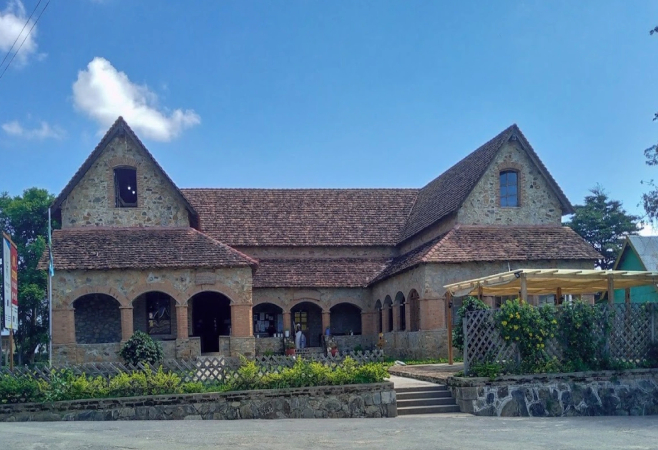
Iringa Boma is one of the best destinations to visit in Iringa
URITHI Tanga Museum
The Tanga Heritage Centre (Urithi), founded in 1999, includes a small museum that highlights the city’s cultural and architectural heritage, with exhibits on colonial history, sisal trade, and local traditions. The museum is situated within a revamped colonial-era building and contains artifacts, photographs and documents that follow the progress of Tanga since it grew into a thriving port city under German and British colonial rule to its current status. There are exhibits on maritime history, the history of Tanga involvement in sisal industry, exhibits covering local customs, and the community.
The museum is also a storehouse of architectural heritage since the building of the museum itself is a source of architectural heritage of the early 20th century. Nice employees give interesting explanations thus the visit can be said to be educational and interesting. The URITHI Tanga Museum is the place that all travelers who want to know more about the cultural and historical background of the city of Tanga must visit as it presents the rich past in life.
Address: Independence Avenue, Tanga, Tanzania
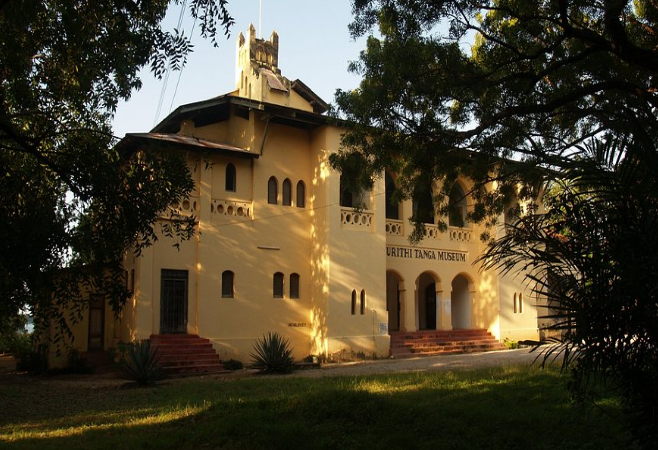
Urithi Tanga Museum offers a fascinating journey through the region's rich history and cultural heritage
Chagga Museum
The Chagga Museum in Marangu, a small community-run museum, showcases the history, customs, and farming traditions of the Chagga people, including traditional houses and coffee cultivation tools. Tourists get to learn their farming methods and see historical tools, weaponry, and household items as well as visit the traditional Chagga houses. There is also an exhibition in the museum on how the Chagga cultivate coffee which represents their main economic and cultural activity.
Educated tribesmen can present amazing stories about the history of how the tribe was formed and how they used to live and fight during colonial times. Located between the beautiful sceneries and surrounded by the Kilimanjaro, Chagga Museum is an enriching culture and scenery that travelers visiting the Marangu region must visit.
Address : PG68+9Q5, Marangu, Tanzania
Things to Know Before Visiting Museums in Tanzania
Visiting museums in Tanzania offers a thrilling experience to understand the history and the diversity of the country and natural heritage. Whether you are interested in archaeology, ethnography, or art, the following tips will help you make the most of your visit
1. Check Opening Hours
The majority of museums in Tanzania are open from 9:00 AM to 5:00 PM, Monday to Saturday and can close earlier or be closed on Sundays or on national holidays. Smaller or community museums may during lunch hours or may close on specified days so it’s best to check and confirm the schedule before you arrive
2. Know the Entrance Fees
Prices vary depending on the type of museum and the visitor’s nationality. An entry fee of 5,000TZS (about $2 USD) to 10,000 TZS (about $4 USD) is common in major national museums for Tanzanian citizens and residents, and 10,000-30,000 TZS (about $4-12 USD) to foreign visitors. In smaller community museums there may be lower fees but in some cases donations are on a voluntary basis. It’s best to carry enough cash, preferably in small bills, as not all places accept card payments
3. Dress Comfortably and Respectfully
Although the dress code is not usually strict, conservative attire is advised, particularly in culturally sensitive places. Wearing comfortable shoes will help you move comfortably through large exhibition spaces or outdoor historical sites.
4. Consider a Guided Tour
It is advisable to hire a guide as guides can provide valuable historical and cultural context for the exhibits. Other museums have it as part of the doorway offering fee and the rest pay additional.
5. Follow Photography Rules
There are museums, where some museums allow photography for free, at other ones a small fee may be charged and then at some it is restricted in parts. When capturing pictures, always check the rules.
6. Payment Methods
Most museums, especially in rural areas, accept only cash payments in Tanzanian shillings. Carry small denominations for convenience. Although bigger or more tourist-friendly institutions can accept credit cards or USD, it is advisable to carry local currency in small formats to get a problem-free transaction.
Conclusion
Tanzania’s museums offer far more than static displays—they are living gateways into the nation’s history, culture, and identity. From world-renowned institutions like the National Museum and House of Culture in Dar es Salaam to community treasures such as the Chagga Museum in Marangu, each of the top 12 museums in Tanzania tells a unique story. Together, they weave a rich tapestry of human origins, diverse traditions, colonial encounters, and artistic expression.
Whether you are fascinated by archaeology, intrigued by cultural heritage, or inspired by contemporary art, these museums provide an invaluable perspective on the soul of the country. Visiting them is not only an educational journey but also an opportunity to connect with Tanzania’s people and landscapes on a deeper level. . Other significant museums not included in this list are the Mwalimu Nyerere Museum Centre in Butiama, dedicated to the life and legacy of Tanzania’s first president, and the Majimaji Memorial Museum in Songea, which commemorates the Majimaji uprising against German colonial rule. For any traveler seeking to enrich their itinerary, these museums are essential stops that will leave lasting impressions long after the trip ends
Related Articles
- Top 15 Churches To Visit in Tanzania That Blend Beauty and History
- The Great Migration Tanzania Safari: A Complete Guide to the World’s Greatest Wildlife Show
- Ultimate Mtwara Tanzania Travel Guide: Best Things to Do and How to Plan Your Trip
- Tanzania Family Holiday Guide: Creating Memories That Last a Lifetime
- Tanzania Tourist e-Visa for First-Time Travelers: A Complete Online Application Guide
- A Complete Guide to Shopping in Zanzibar: What to Buy and Where to Find It
- The Ultimate List of the Best Restaurants in Nungwi for Fresh Seafood and Ocean Views
- The Ultimate Singida Travel Guide: Planning Your Trip to Central Tanzania
- Beyond Parliament: Discover the 13 Best Restaurants in Dodoma Serving Amazing Food
- Into the Wild West: A Comprehensive Traveler's Guide to Katavi National Park











